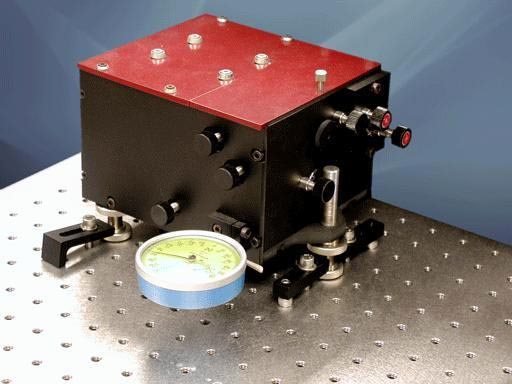Del Mar Photonics
Customer inquiry:
I'm requesting a quote for a Multishot-FROG (including a laptop and software
to do the FROG retrieval) for a fiber laser system that consists of an
oscillator and an amplifier (free space coupling is possible). I want to do
measurements with both:
I've attached a spectrum recorded for the oscillator and for one setting of the
amplifier (I want to try out many different settings there). The rep rate of the
oscillator is about 63 MHz, pulse length in the order of 1 ps (Fourier transform
limited is 170 fs). The average power will be > 20 mW (still needs to be
optimised). The rep rate of the amplifier is flexible and will most likely be
chosen to be around 1 MHz or smaller and the amplification can be adjusted, on
average I'd like to keep the average power equal and just lower the rep rate.
I would like to achieve a sensitivity down to 1 W2 (P_peak * P_avg) for
quantitative measurements and 0.1 W2 for qualitative measurements.
I would like a 200 micron thick SHG crystal and one 500 micron thick one, to be
able to have optimum settings for the amplifier and the oscillator. And a cooled
CCD spectrometer for optimum sensitivity (I was thinking about the QE65000).
Reef-FROG 11.1101 -
request
a quote
DelMarFS-Ultra Reef-FROG Scan Ultra Platform includes one crystal
QE65000 Scientific, cooled CCD spectrometer set for a wavelength range for Yb
fiber laser
DelMar-vFROGscan vFROG scan real time data acquisition and analysis software
SHG Crystal, Standard mounted 500 um crystal

|
Reef femtosecond autocorrelators
The autocorrelation technique is the most common method used to determine
laser pulse width characteristics on a femtosecond time scale.
The basic optical configuration of the autocorrelator is similar to that of an
interferometer (Figure.1). An incoming pulse train is split into two beams of
equal intensity. An adjustable optical delay is inserted into one of the arms.
The two beams are then recombined within a nonlinear material (semiconductor)
for two photon absorption (TPA). The incident pulses directly generate a
nonlinear TPA photocurrent in the semiconductor, and the detection of this
photocurrent as a function of interferometer optical delay between the
interacting pulses yields the pulse autocorrelation function. The TPA process is
polarization-independent and non-phasematched, simplifying
alignment.
Reef-RT autocorrelator measures laser
pulse durations ranging from 20 femtoseconds to picosecond regime. It measures
pulse widths from both low energy, high repetition rate oscillators and high
energy, low repetition rate amplifiers. Compact control unit operates
autocorrelator head and optional spectrometer through on-screen menus.
Autocorrelation trace and spectrum can be displayed and analyzed on screen or
downloaded to remote computer.
New:
Reef-20DDR autocorrelator
Collinear (interferometric) autocorrelation
for 1300-2000 nm wavelength range |
